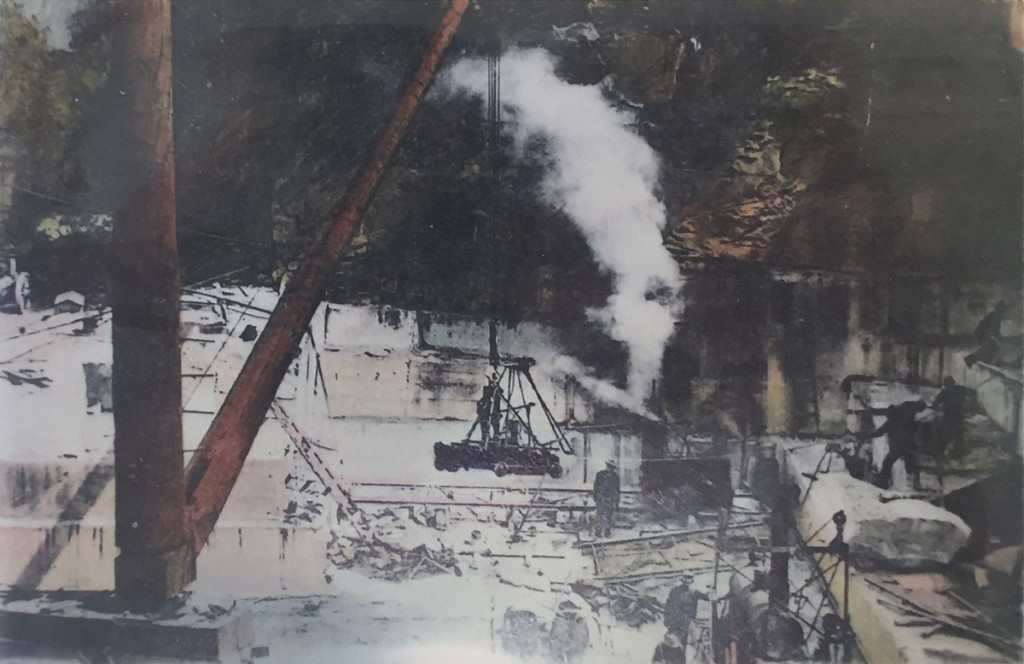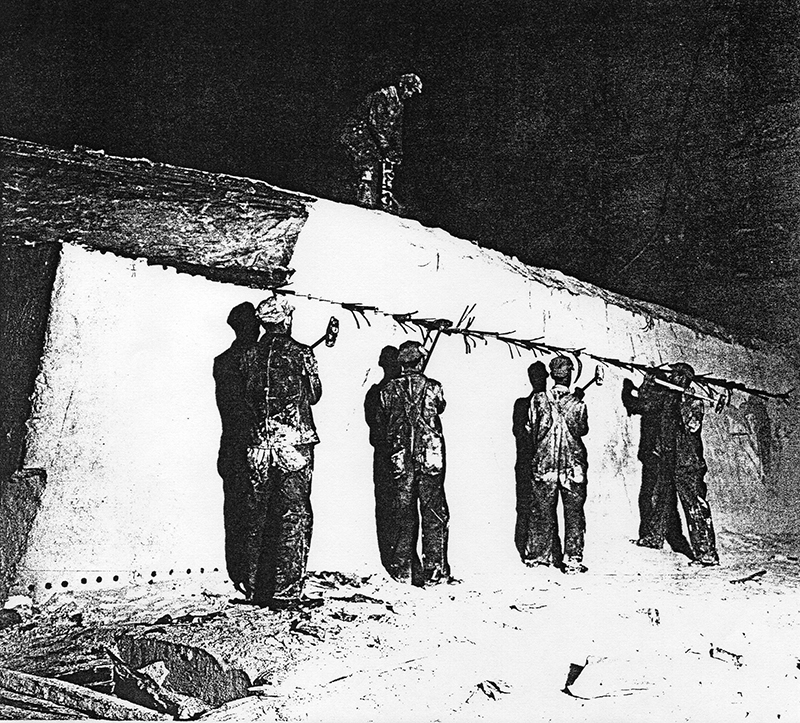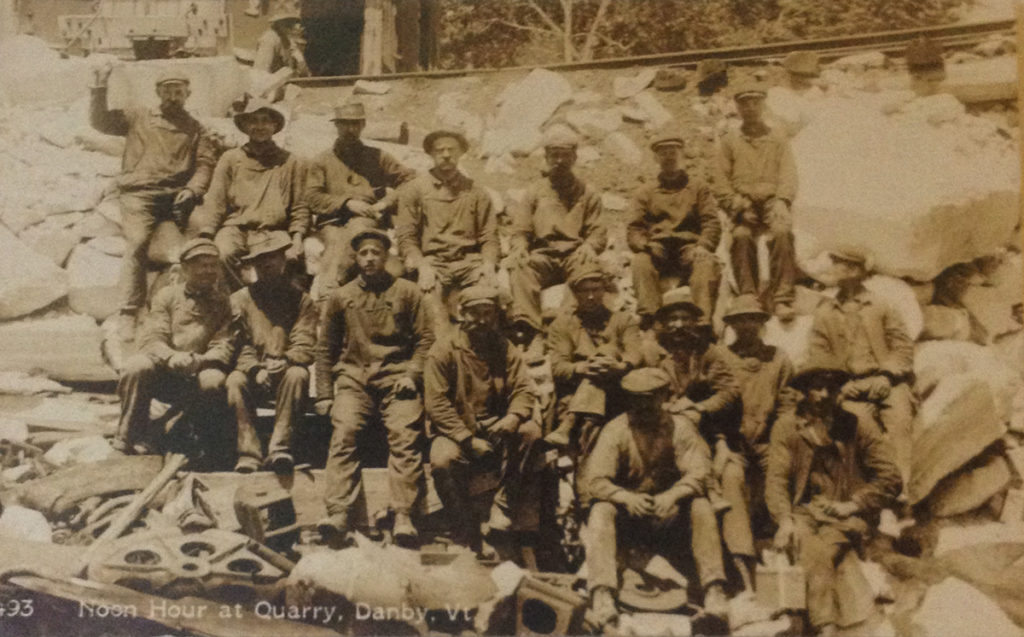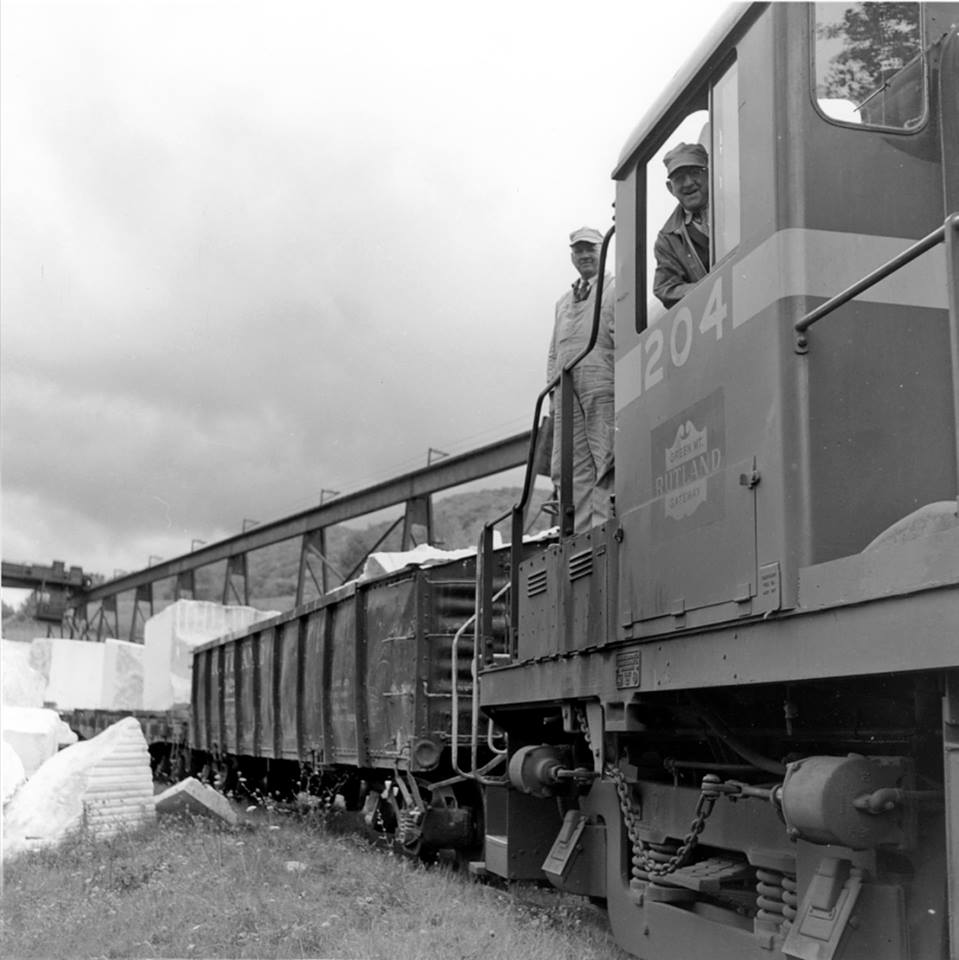
The earliest form of quarrying marble in Danby dates to 1827 when James Lincoln and others produced grave stones from marble they had hewn from the mountain. The Grady family made an opening into the north side of the mountain in the 1830’s which, along with the resulting marble dump is still visible. Around 1842 the Western Vermont Marble company made another opening nearby. The first mill for sawing marble was built near the intersection of Brook Road and Danby Hill Road by William, Alfred and Albert Kelley and used the water power generated by a wheel, the falls and a log dam. About that same time another was built by Moulton and Elisha Fish, and Allen Congor in the area known as “Fishville” a bit upstream near the intersection of Easy Street. This street was so-named because it was the “easy” way of bringing the marble down from the mountain. In 1841 another was built by Aaron Rogers, Elisha Rogers, and Seth Griffith. Another mill was put in operation by George, John T. and Gardner Griffith. In 1848 William Haskins and Hiram Kelley built and operated yet another mill.
When the Western Vermont Railroad was completed in the 1850s the marble business flourished. However, the railroad went bankrupt in 1857 and the quarries sat dormant for half a century. On December 1, 1905 the Vermont Marble Company purchased the Danby Quarries and property. Work on the present Imperial Quarry began in 1907. An opening was tunneled horizontally into the mountain 100′ before sound, commercial grade marble was obtained. The quarried blocks would be loaded onto a cable rail car by derrick and travel down an incline railway (with a vertical drop of close to 900) approximately one-half mile to a gantry along Route 7 where a traveling overhead crane would load them onto rail cars for transportation to the finishing mills in West Rutland. The incline track was a fascinating piece of engineering consisting of two rails with a passing switch at the half-way point. A block car was attached to each end of a cable and was so designed that one car could be loaded at the quarry while the other was unloaded at the base of the mountain. At the half-way point a switch is automatically thrown allowing the cars to pass. Blocks weighing up to 80 tons have been taken out over this system. The blocks used as the bases for the statues at the Supreme Court weighed 63 tons each.
With contracts for the U. S. Supreme Court Building, the Red Cross Building, the Arlington Memorial and Oregon State Capitol, an upper Tunnel Quarry was opened in 1935. The Whitestone Brook Quarry was also opened and was a large pit. After these massive projects were completed, these portions of the quarry fell into disuse until Superintendent Michael Blair re-opened it in 2016 and this fine source is active once again with a grand plan of connecting it to the main Tunnel Quarry. More than thirty 25′ square pillars rise about 90 feet from the floor to the ceiling of the quarry in order to hold up the mountain above this underground chamber. The high quality of Danby marble comes from its color, strength, durability and purity. Formed by densely arranged crystal of calcium carbonate that originates from the increased pressure and temperature in sedimentary rock layers of common limestone, marble is formed after millions of years of powerful contractions that recrystallize the limestone into marble as a result of heat. The Imperial Quarry operated on the Columbian marble layers of the Shelburne formation, a geologic formation of Ordovician Age extending north-south the length of the State of Vermont and known as the “Marble Belt.” The entrance of the quarry starts on the east limb of a syncline and has been driven to the west following the dip of the layers to the center or trough of the syncline where operations have since continued in a southerly direction.
Photos
Click to view larger.























































































Danby Quarry Tour with This Old House
The Western Vermont Railroad went bankrupt in 1857 however, and the quarry sat dormant for nearly half a century until the Vermont Marble Company bought the holdings and revved production back into full gear in response to the boom in marble architecture across the country. Danby marble has since been shipped all over the world and has been used in such notable projects as the Jefferson Memorial, Arlington National Cemetery and hundreds of other buildings and monuments around the world.
The high quality of Danby marble comes from its color, strength, durability, and purity. Formed by densely arranged crystals of calcium carbonate that originates from the increased pressure and temperature in sedimentary rock layers of common limestone, marble is formed after millions of years of powerful contractions that recrystallize the limestone into marble as a result of heat. The local use of Danby marble dating back to the 18th century is a testament to the durability of this marble, and only further proves why Vermont is home to the most sought after marble in the world.
Danby Tunnel Quarry
The Tunnel Quarry was opened in 1935 and provided such fine specimens as the Supreme Court Building and the Red Cross building in Washington, DC as well as the Arlington Memorial and Oregon State Capitol. A mile long road rising 900 feet up from the valley was built to access this quarry as well as a short railroad to take the blocks to the incline railway going down the side of the mountain.
More than thirty 25 foot square piers rise 90 feet from the floor to the ceiling of this quarry in order to hold up the mountain above this underground chamber. It covers nearly 8 acres. In the 1930s electric-air machinery was used as well as a system of derricks to swing the blocks of marble onto a cable car where it would ride one mile down an incline railway to the loading gantry on the Rutland Railroad where it would be loaded on flat cars and taken to the fabricating plants in Proctor, VT. Blocks weighing up to 80 tons were taken out over this cable system. The blocks used as the bases for the statues at the Supreme Court weighed 63 tons each. After these massive projects the Tunnel Quarry fell into disuse until Quarry Superintendent Michael Blair re-opened it in 2016 and is once again providing a fine source of marble.
Online Articles of Interest
Chiseled Features, rutlandherald.com













